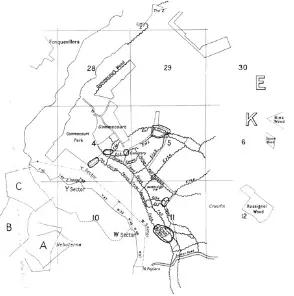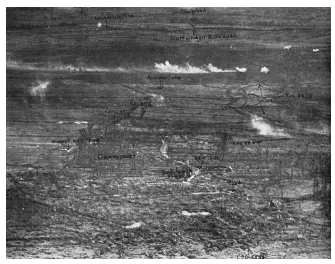Charles Humble Dudley Ward - The 56th Division
Здесь есть возможность читать онлайн «Charles Humble Dudley Ward - The 56th Division» — ознакомительный отрывок электронной книги совершенно бесплатно, а после прочтения отрывка купить полную версию. В некоторых случаях можно слушать аудио, скачать через торрент в формате fb2 и присутствует краткое содержание. Жанр: foreign_prose, История, foreign_edu, foreign_antique, на английском языке. Описание произведения, (предисловие) а так же отзывы посетителей доступны на портале библиотеки ЛибКат.
- Название:The 56th Division
- Автор:
- Жанр:
- Год:неизвестен
- ISBN:нет данных
- Рейтинг книги:5 / 5. Голосов: 1
-
Избранное:Добавить в избранное
- Отзывы:
-
Ваша оценка:
- 100
- 1
- 2
- 3
- 4
- 5
The 56th Division: краткое содержание, описание и аннотация
Предлагаем к чтению аннотацию, описание, краткое содержание или предисловие (зависит от того, что написал сам автор книги «The 56th Division»). Если вы не нашли необходимую информацию о книге — напишите в комментариях, мы постараемся отыскать её.
The 56th Division — читать онлайн ознакомительный отрывок
Ниже представлен текст книги, разбитый по страницам. Система сохранения места последней прочитанной страницы, позволяет с удобством читать онлайн бесплатно книгу «The 56th Division», без необходимости каждый раз заново искать на чём Вы остановились. Поставьте закладку, и сможете в любой момент перейти на страницу, на которой закончили чтение.
Интервал:
Закладка:
I am doubtful of the value of these long bombardments, which give the enemy time to recognise the points selected for the attack, and possibly to relieve his troops, and to concentrate guns, and to bring up ammunition.
The intense bombardment prior to the attack lasted sixty-five minutes, considerably longer than any of the previous bombardments. I am in favour of having as many false attacks and lifts of artillery fire as possible, but consider there should be no difference....
The German attitude and moral varied considerably—some of the enemy showed fight, but other parties were quite ready to surrender as soon as they came up from their dugouts. But it cannot be said that their moral was any more shattered by the bombardment than were their dugouts. Later in the day German bombers advanced with great boldness, being assisted by men who advanced over the open. Our men appear to have had no difficulty in dealing with enemy bombers at first—it was only when bombs were scarce that the enemy succeeded in pushing us back. The counter-attacks on the right were never made in great strength, but were prepared by artillery fire which was followed up closely and boldly by bombers. On the left the enemy appeared to be in greater strength, and came out of Gommecourt village and through the Park in great numbers.”
The men of London had done well, although the salient remained in the hands of the enemy. The effort of the infantry was valiant, and they were supported with devotion by the artillery. The artillery observers took great risks, and the conduct of one of Lieut.-Col. Prechtel’s wire-cutting batteries is well worthy of note. It established itself practically in our front line, about W48, and fired 1,200 rounds during X, Y, Y1, Y2 days and on Z day fired a further 1,100 rounds.
The German plan was, as has been shown, to prevent all reinforcements from crossing No Man’s Land, and to deal with those troops who had lodged themselves in their trench system by strong and well-organised bombing attacks.

1. The Gommecourt Salient.
The dotted line is the old British line.
GOMMECOURT, JULY 1916

There is no doubt that the main object of the attack had been fulfilled. Unpleasant as it may seem, the rôle of the 56th Division was to induce the enemy to shoot at them with as many guns as could be gathered together, and also to prevent him from moving troops. The prisoners captured were 141 from units of the 52nd Reserve Division, and 37 from the 2nd Guards Reserve Division, so that no movement of troops had occurred on that front, and we know that the number of batteries had been increased. There were many more prisoners than this, but they were caught in their own barrage as they crossed No Man’s Land, and large numbers of dead Germans were afterwards found in that much-battered belt.
The main attack of the Fourth Army, launched on the same day, succeeded on the right. North of the Ancre as far as Serre our losses were severe, and the initial gains of the assaulting troops could not be maintained. After five days’ fierce fighting, the enemy’s first system of defence farther south had been penetrated to a depth of a mile over a front of six miles. But north of the Ancre, after the first day, operations were confined to maintaining a steady pressure on the enemy.
This battle, with the subsidiary attack on the Gommecourt Salient, is known as the battle of Albert 1916.
The division was not relieved. It had suffered in casualties 182 officers and 4,567 other ranks. The London Scottish had sent 24 officers and 847 other ranks into battle, and 9 officers and 257 other ranks had come out. The Rangers had sent in 23 officers and 780 other ranks—6 officers and 280 other ranks came out. The Queen Victoria’s Rifles came out with 22 officers and 160 other ranks; the London Rifle Brigade, 18 officers and 300 other ranks; the Queen’s Westminster Rifles, 19 officers and 160 other ranks. The supporting battalions suffered only slightly less.
When the fighting had abated the enemy seems to have initiated a truce to gather in the wounded. His own stretcher-bearers came out, on seeing which ours also went out. This state of affairs lasted for an hour, when our men were warned to get back to their lines.
The state of the line was extraordinary. The front line, over which so much labour had been expended, had ceased to exist, and could only be held by means of patrols and a few small posts. Our main line was now what was known as the R Line, the original line when the 56th Division arrived in the sector. And the front held by the division was gradually increased. From the 3rd July onwards the division took over the line to the left until on the 8th the 169th Brigade was north of Fonquevillers with its left opposite Little Z. Each brigade held its front with two battalions in the line, one in brigade reserve and one in divisional reserve.
During the night of the 13th the artillery made a “demonstration” in order to help the Fourth Army, which was again attacking in the south. On this night a patrol of the Queen’s Westminster Rifles captured a prisoner who proved to be of the 91st Regt.—a normal unit.
On the 17th of the month all three brigades attempted raids, but the enemy were found to be too alert, and no prisoners were obtained.
The division remained on this front, keeping the enemy busy, until the 20th August, when it was relieved by the 17th Division, and marched first to Doullens, then to Fromer-le-Grand, then to St. Riquier, where it proceeded to refit and train under the orders of the X Corps.
CHAPTER II
THE SOMME
The move to St. Riquier, in the neighbourhood of Abbeville, revealed to some of the officers that their men were not very fit for marching. This knowledge appears to come as a revelation to some people. Those on active service very soon discovered that a long period of trench duty, though it hardened the men to those particular conditions, made them unfit for any strenuous marching. It was probably never understood by people in England. They were, then, weary battalions that arrived at St. Riquier.
When it is said that a battalion or a division was “resting,” that word must not be taken in too literal a sense. One might define it with greater truth as being a change of location, sometimes a mere matter of a mile or so, at others perhaps fifty miles. There were, it is true, no trenches to man, no sentry groups by day and night, but there was always work to be done. And the work, very naturally, had always the one end in view—the defeat of the Germans.
The training was almost exclusively of an aggressive nature. Unless there was some special object in view, when trenches would be dug to represent our own and those occupied by the enemy, the optimistic nature of the Higher Command always leaned to open warfare training. Companies wandered about, as they do in England, attacking villages, strong points, and woods, and indulged in vast schemes of pursuit after phantom armies called Red or North or South Armies. But this short period at St. Riquier gave the 56th Division a surprise in the matter of training.
Battalions had been reinforced since the Gommecourt action, and there was some grumbling about the nature of the reinforcements. Batches of men, from all sorts of units, were drafted to battalions, and General Hull made great efforts to get this system altered. Battalions, however, were of fair strength.
Читать дальшеИнтервал:
Закладка:
Похожие книги на «The 56th Division»
Представляем Вашему вниманию похожие книги на «The 56th Division» списком для выбора. Мы отобрали схожую по названию и смыслу литературу в надежде предоставить читателям больше вариантов отыскать новые, интересные, ещё непрочитанные произведения.
Обсуждение, отзывы о книге «The 56th Division» и просто собственные мнения читателей. Оставьте ваши комментарии, напишите, что Вы думаете о произведении, его смысле или главных героях. Укажите что конкретно понравилось, а что нет, и почему Вы так считаете.




![Александр Ирвин - Tom Clancy’s The Division 2. Фальшивый рассвет [litres]](/books/417744/aleksandr-irvin-tom-clancy-s-the-division-2-falsh-thumb.webp)







